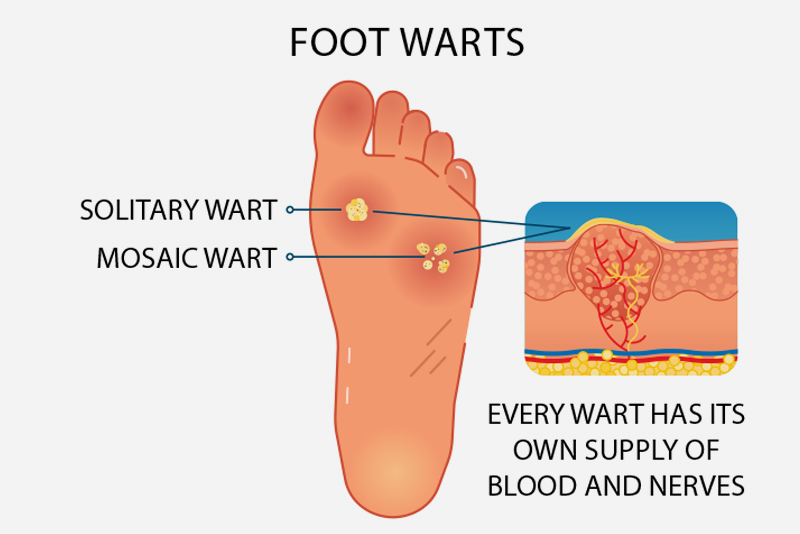Warts are common, often harmless, but certainly unwelcome skin growths. Caused by the human papillomavirus (HPV), they can appear anywhere on the body, from the soles of the feet to the hands and face. If you’ve ever had one, you’ve likely wondered about the quickest and easiest way to get rid of it. But is the easiest way simply waiting?
The question of whether warts can disappear without intervention is a frequent one, and the answer, according to medical professionals, is a qualified yes. However, understanding the timeline and the factors involved is crucial before you decide to adopt a ‘wait-and-see’ approach.
Understanding Warts: The Role of the Immune System
Warts are essentially benign skin tumours that result from an infection with the human papillomavirus (HPV). They are contagious and transmitted through contact with the virus, often in warm, moist environments like changing rooms or swimming pools.
Unlike a bacterial infection, which can be fought off with antibiotics, the HPV infection is countered solely by your body’s immune system. When a wart appears, it means the immune system hasn’t yet recognised the virus or mounted a full, effective response to eliminate the infected cells.
The Natural Resolution Timeline
The good news is that the body does eventually learn to fight off the HPV causing the wart. Doctors confirm that, for many people, warts will resolve spontaneously without any treatment.
- Children and Young Adults: In this demographic, the natural regression of warts is most common. Estimates vary, but many doctors suggest that up to two-thirds of warts in children will disappear on their own within two years. Their immune systems are typically more robust and reactive.
- Adults: For adults, the spontaneous resolution rate is lower and the timeline is often longer, sometimes taking several years. This is largely because the immune system’s response can be slower, and the infection may be more established.
Why the Delay?
The reason warts can take so long to resolve naturally is that the HPV creates a kind of immune ‘shelter’ within the skin, effectively hiding itself from the T-cells and antibodies designed to destroy it. It takes time for the immune system to successfully identify and target the infected cells.
When to Consider Wart Removal Treatment
While waiting is an option, it is not always the best or most practical one. There are several factors that lead medical professionals to recommend active wart removal treatments over natural resolution.
1. Pain and Discomfort
Warts that grow on weight-bearing areas, such as plantar warts on the soles of the feet, can become extremely painful and make walking difficult. In these cases, treatment is often necessary to alleviate symptoms and improve mobility.
2. Risk of Spreading
Warts are contagious. If you have a wart that you are frequently touching or that is exposed, there is a high risk of spreading the virus to other parts of your body (a process called autoinoculation) or to other people. Active treatment is a responsible way to minimise transmission risk.
3. Aesthetics and Self-Consciousness
Common warts, especially those on highly visible areas like the hands or face, can cause considerable distress or self-consciousness. If a wart is negatively affecting a person’s mental wellbeing or quality of life, professional removal is a valid and recommended option.
4. The Wart is Persistent or Rapidly Growing
If a wart has been present for a long time without change, or if it is rapidly increasing in size or number, this may indicate a particularly stubborn strain of HPV or a weakened local immune response. A doctor will likely recommend professional wart removal in this scenario.
Effective Wart Removal Option
For those who choose not to wait, or for whom the natural process has failed, several effective wart removal options are available, ranging from over-the-counter products to in-clinic procedures:
- Salicylic Acid: Available as a paint, gel, or plaster, this is a common first-line, over-the-counter treatment. It works by gradually peeling away the layers of the wart. This treatment requires patience and consistent application over several weeks or months.
- Cryotherapy: This involves a doctor or nurse freezing the wart with liquid nitrogen. The extreme cold destroys the cells, causing a blister to form underneath the wart, which eventually lifts and falls off. Several treatments are often required.
- Minor Surgery (Excision): For particularly large, deep, or stubborn warts, a doctor may surgically cut out the growth. This is typically a last resort and can leave a small scar.
- Laser Treatment: Pulsed dye laser treatment heats and destroys the tiny blood vessels within the wart, starving the infected tissue.
In conclusion, while warts can disappear on their own, there is no set guarantee or timeline. If a wart is causing pain, spreading, or is a source of emotional distress, consulting a General Practitioner or Dermatologist for professional wart removal advice is the best course of action. They can help you weigh the pros and cons of watchful waiting versus active treatment based on your individual circumstances.

